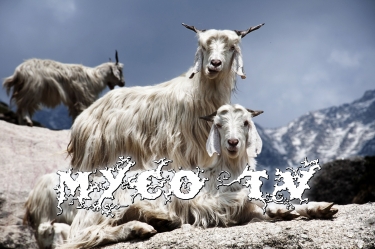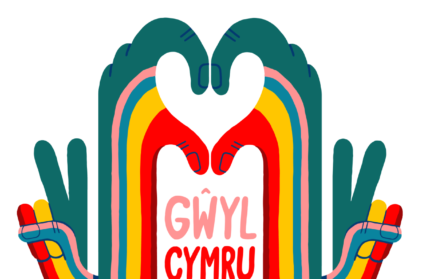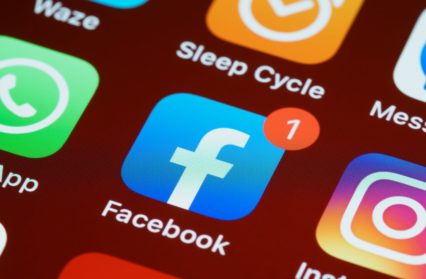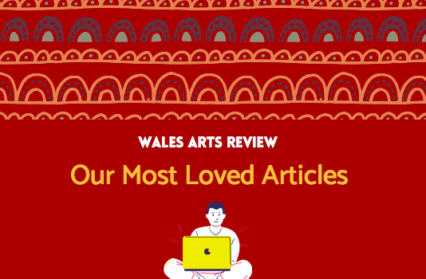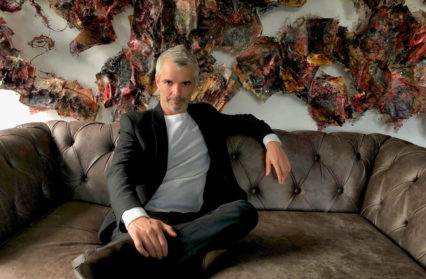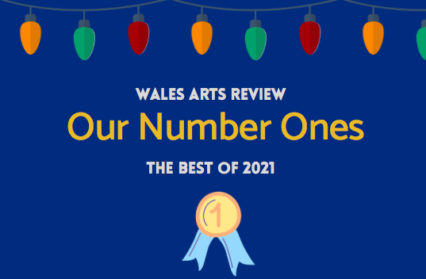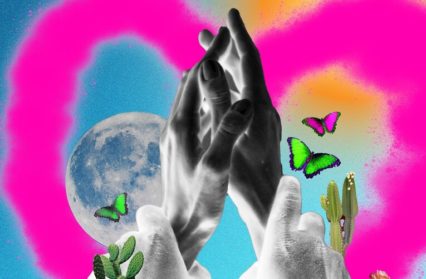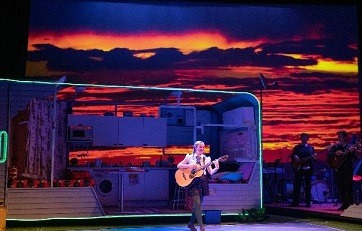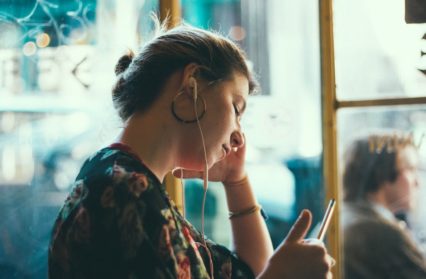Candy Bedworth reviews MycoTV, a new programme developed by the Mycological Twist in collaboration with Mostyn Art Gallery in Llandudno.
Lockdown has been a dispiriting and lonely affair, so when I saw that Mostyn Gallery in Llandudno were planning an online TV programme, running over five evenings, I leapt at the chance to watch and review it. However, like the lockdown fruitcakes I baked, this was mostly a soggy bottomed affair punctuated by occasional gems of fruity delight.
This was the second iteration of MycoTV, led by The Mycological Twist, a Berlin-based duo, in collaboration with Mostyn. This project was part of Mostyn’s EDGE digital programme, supported by Arts Council Wales, for which their other school projects garnered great feedback. But as Mostyn’s digital curator, Clare Harding, says herself about digital art: “without an audience there is no engagement”. And sadly, from the latest viewing figures, it seems this project did not engage. Mostyn’s commitment to reaching audiences even while they have been forced to close is remarkable. Unfortunately, MycoTV sometimes felt badly planned, poorly curated and painfully presented.
To enhance the viewing progress and in an entirely unscientific manner, I gathered a handful of contacts young and old to watch MycoTV together ( in a socially distanced way of course). Not all made it through all five days citing that ‘life is too short; and ‘I lost the will to live’, however it certainly opened up some interesting discussions whether or not as the art intended.
A particu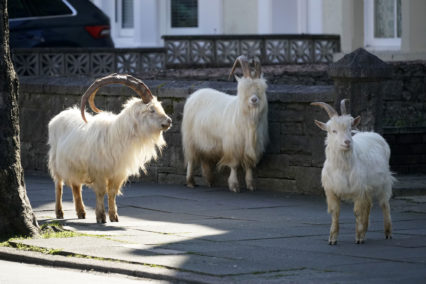 larly contentious program for all was the wild goats of Llandudno. These goats have been around for over a hundred years, live in the hills and when it is quiet head into town. This image has captured the national international Corona-fevered imagination, and we’ve seen clips of the goats chewing on suburban privet again and again over the last few months. But something about it felt patronising – oh those Welsh, they’re a bit of a laff aren’t they, with their goats in the street! Combine this with the seaside organ and strangulated yet ghostly ‘Myco TV’ voice over and it makes for irritating viewing.
larly contentious program for all was the wild goats of Llandudno. These goats have been around for over a hundred years, live in the hills and when it is quiet head into town. This image has captured the national international Corona-fevered imagination, and we’ve seen clips of the goats chewing on suburban privet again and again over the last few months. But something about it felt patronising – oh those Welsh, they’re a bit of a laff aren’t they, with their goats in the street! Combine this with the seaside organ and strangulated yet ghostly ‘Myco TV’ voice over and it makes for irritating viewing.
There were however some very interesting pieces around theory and fiction, where programming finally came to life. How technocapitalist amplification affects living and non-living elements, still remained a mystery after watching, but we did thoroughly enjoy Marija Bozinovska Jones’ animated ‘Self Optimisation’ story. Surreal and dream-like, with the wonderful animation programming of Jayson Haebich, this was a pleasure to watch. Although our teen audience said it reminded them of the fake animation sequences played in the background of the hacker game ‘Watchdogs’. Thumbs down from the younger set.
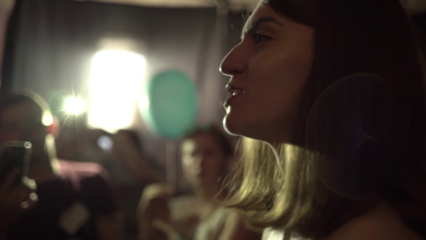 Too often, sound and visuals felt ill-matched, or hastily arranged. Juliet Jacques’ ‘Aphorisms of Self-Care’ was absolutely fascinating, and it scored highly with our audience. But the images were like a bad GCSE PowerPoint presentation – a distraction from the immensely thought-provoking ideas.
Too often, sound and visuals felt ill-matched, or hastily arranged. Juliet Jacques’ ‘Aphorisms of Self-Care’ was absolutely fascinating, and it scored highly with our audience. But the images were like a bad GCSE PowerPoint presentation – a distraction from the immensely thought-provoking ideas.
There seemed to be lots of ‘lo-fi’ digital throughout, but not much high end digital. Our younger teen set, who spend a lot of time in the digital world, found that the programming fell between two stools. The low-tech stuff was quirky but not ‘eye-candy’ enough to stick with, and nothing compared well with the impressive high-end tech used currently on stage, screen, gaming or in animation. Another viewer said that the overall feel was a little old, like it would have been really cool and new in the 90s.
An older reviewer who listens to a lot of radio made an interesting observation – that much of what they saw would have made an interesting podcast, something to listen to as you sit in the garden or watch the rain. But as a stand-alone piece of audio-visual digital art, some of the programming fell short.
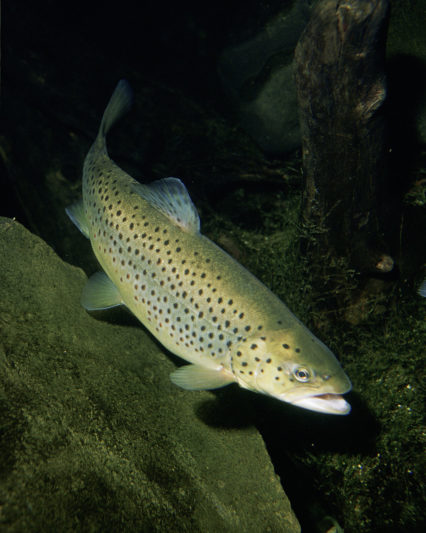 Angharad Williams’ ‘Trout’ was admired. But there was debate over whether the presentation was either a disaster or truly inspired. Firstly, don’t smoke if you don’t know how to inhale. And secondly, listening to a man drawl about admiring, tickling, then grabbing and biting into the raw flesh of a baby trout was gruesome for some. Others wondered if this was a feminist exploration of the male mind? Or of our human urge to grab and destroy? Maybe. Read by a woman, this would have played out very differently, so this episode inspired debate, which was good.
Angharad Williams’ ‘Trout’ was admired. But there was debate over whether the presentation was either a disaster or truly inspired. Firstly, don’t smoke if you don’t know how to inhale. And secondly, listening to a man drawl about admiring, tickling, then grabbing and biting into the raw flesh of a baby trout was gruesome for some. Others wondered if this was a feminist exploration of the male mind? Or of our human urge to grab and destroy? Maybe. Read by a woman, this would have played out very differently, so this episode inspired debate, which was good.
It was commendable to see that Mostyn added in a reference to the Black Lives Matter protests happening around the world. We saw an impressive range of support groups and fund-raising bodies being promoted between programming. But ad hoc virtue signalling is not enough. If we look at who was selected for this project, we see the problem that galleries and museums across the art world have simply refused to take on board for decades.
Black artists and creators are poorly represented across all cultural institutions. And this programme was no exception. Out of 18 artists, there were a few people from minority ethnic backgrounds and only a couple of Welsh voices (one of whom had her work ‘voiced’ by an American male).
It would be unfair to select Mostyn above any other arts organisation for curatorial criticism. But they point out themselves that Dr Sibani Roy, of NWAMI, who lives in North Wales, “has worked tirelessly to promote cross cultural engagement through art, music, dance, literature and language”. Why then was she only invited as an afterthought, while the main programme was chock-full of white Europeans?
Art is global, of course, and here in Wales we want to be presented with the interesting, the innovative, and the amazing from all over the world. This is an outward-looking nation. But we mean all of the world – not just London, Berlin and Paris. What we also want is to be shown our own talent – there is so much work being done by incredible Welsh artists, including in digital arts, but where were they?
Every one of us should be ready to be challenged by art that seems new, odd, uncomfortable, or different. MycoTV can show us something valuable we didn’t even know we were looking for. It can show us something we urgently need but have turned away from. But here there was the inescapable feeling that the viewer was being exposed to a vocabulary they were not meant to understand. The result was often confusion rather than insight. Too often, this felt like spying in at work created by clever artists for other clever artists, or perhaps just for their own clever selves. Or maybe we’re just philistines.
All five episodes of The Mycological Twist: MycoTV can be viewed at MOSTYN.


